Lincoln Futura (Part I of III)
By Jim and Cheryl Farrell
The Lincoln Futura was conceived in 1952 by Bill Schmidt, who at the time was head of the Lincoln-Mercury design studio. While on a diving vacation in the Bahamas with his friend Bill Mitchell, a GM designer of some fame, they both became fascinated by the underwater sea life they saw. For Schmidt that fascination resulted in the Futura; for Mitchell it was translated into the Corvette XP-755 and eventually the Corvette Stingray.
Although GM’s Motorama pushed Ford to build ever more exotic concept cars, Ford’s original reason for building postwar concept cars was to capture features incorporated on their concept cars (like big round taillights) and to discourage other companies from using those features on their future production cars. Benson Ford, then head of Lincoln-Mercury Division, liked concept cars. Mercury had created the fully-operable XM-Turnpike Cruiser. It was returned from Ghia eleven months after the Futura. The Futura was Lincoln’s attempt to produce a very memorable and popular concept car.
Ford determined that concept cars could be built in Europe much cheaper than in the US. The Stylerama cars were all supposed to be pushmobiles, for which the Italian coachbuilders had given bids of $15,000-$50,000 to build each. Ghia charged $80,000 to build the Mercury XM-Turnpike Cruiser, which was fully operable, and L-M Division paid Ghia $75,000 to build the Futura. As was the XM-Turnpike Cruiser, the Futura was all metal and not fiberglass, and it was fully operable. Although many have claimed that Ghia was paid $250,000 to build the Futura, that’s not true. L-M Division publicity did claim the entire Futura project cost $250,000, but that included all costs including designers’ and clay modelers’ wages, workers comp, retirement, etc.
The Futura concept car was authorized by Benson Ford. Initial estimates from Schmidt were that the entire Futura project would cost about $100,000 plus design and clay modeling time. Schmidt prepared the initial sketches of the Futura; the body development was followed by John Najjar; Martin Regitko did the design engineering; Roy Brown supervised the design work; designer Ken Spencer supervised the clay modeling; Stan Thorwaldsen designed the entire interior; and Ron Perry designed the double-bubble Plexiglas top.
The chassis and running gear (including engine) were from an unused mechanical prototype built by Hess and Eisenhardt for the Mark II project and made from a cobbled ‘53 Lincoln. Continental Division sold the unused mechanical prototype to L-M Division for $17,000. Plans, blueprints, a plaster model, chassis and running gear were all sent to Ghia in Turin, Italy, to be made into a full-sized running vehicle. The complicated Plexiglas top and interlock system was built in the US and shipped to Ghia. Don DeLaRossa, who spoke fluent Italian, supervised the build process in Italy.
The Futura was neat looking, but its air conditioning was awful. The occupants cooked like stuffed pigs with the top closed. (There were no opening windows.) When driven at speed, the Plexiglas top “drummed” from road noise. Otherwise, those inside could hear very little of what was going on outside, so a microphone was installed, but it didn’t work very well. With its great looks and despite all its faults, the Futura really was a laboratory on wheels, and is arguably the most popular concept car ever built.
Schmidt left Ford for Packard in March ‘55. In May ‘55 George Walker was named a Ford vice president and placed in charge of Ford design. Later that same month John Najjar was named by Walker to head the Lincoln design studio. When he got into the main Lincoln studio, the ‘57 Lincoln had already been designed supposedly by Schmidt before he left. However, the story’s much more complicated than that.
After Schmidt left, Walker and Elwood Engel, Walker’s assistant manager, redesigned Schmidt’s production ‘57 Lincoln proposal to make it look as much like the Futura as they could. Najjar was told the ‘57 Lincoln clay had been designed by his friend Bill Schmidt, but Najjar hated it anyway, and insisted on lowering the fins by 6 or 7 inches and making “other changes.” (Schmidt vehemently denied putting the big fins on the production ‘57 Lincoln.)
Only after Najjar retired did the full story of the changes made to Schmidt’s alleged ‘57 Lincoln proposal come to light. No photos of the ‘57 Lincoln before Najjar lowered the fins can now be located nor can any photos or sketches of Schmidt’s initial proposals for the production ‘57 Lincoln. What the existing Design Center photos do show is the ‘57 Lincoln clay immediately after the fins were lowered, but it still had all the remaining Futura design cues, which were mostly removed by Najjar before production. Except for the changes made by Najjar, the ’57 Lincoln was supposed to be a productionized version of the Futura.
Next time, part II will tell how the Futura became the infamous Batmobile. Part III is an interview with George Barris, now deceased, the man who turned the Futura into the Batmobile.
Photos Courtesy of Ford Archives.
Books by Jim and Cheryl Farrell
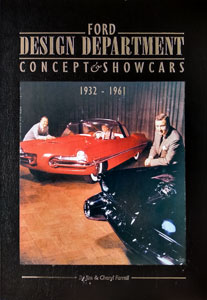
Ford Design Department—
Concepts & Showcars
1999, 10×13, 400 pages, Fully indexed
900 photos. Includes 150+ designers and sculptors, and highlights 100 concept cars.
ISBN 0-9672428-0-0
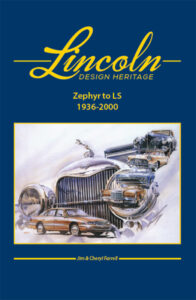
Lincoln Design Heritage:
Zephyr to LS (1936-2000)
2021, 10×13, 480 Pages, Fully Indexed
1,600 photos and illustrations
ISBN 978-0-9672428-1-1
The Ford book is $50 plus $7 S&H (US). The Lincoln book is $85 plus $10 S&H (US). Both books bought together are $110 plus $17 S&H (US). To order, email: cfarrell57@gmail.com

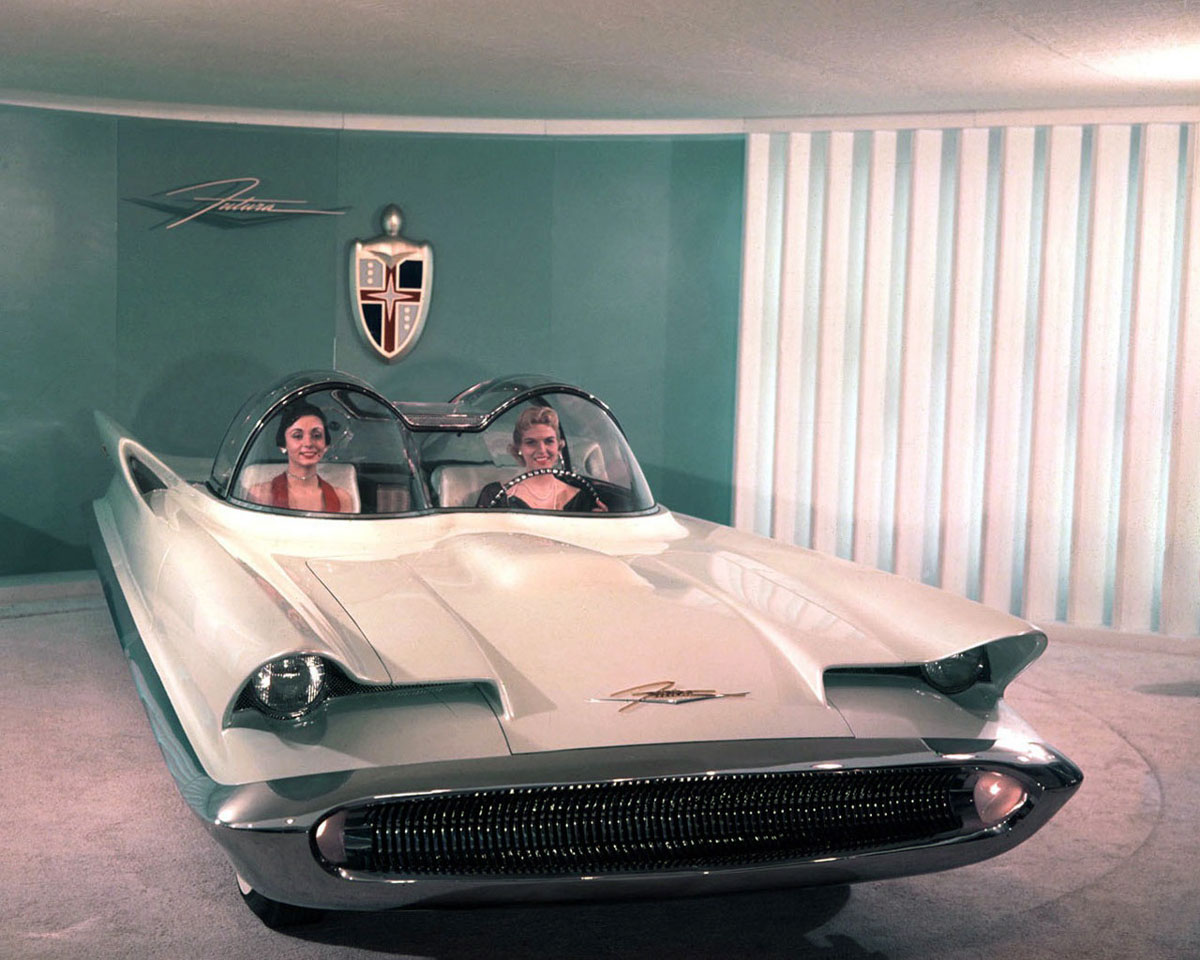
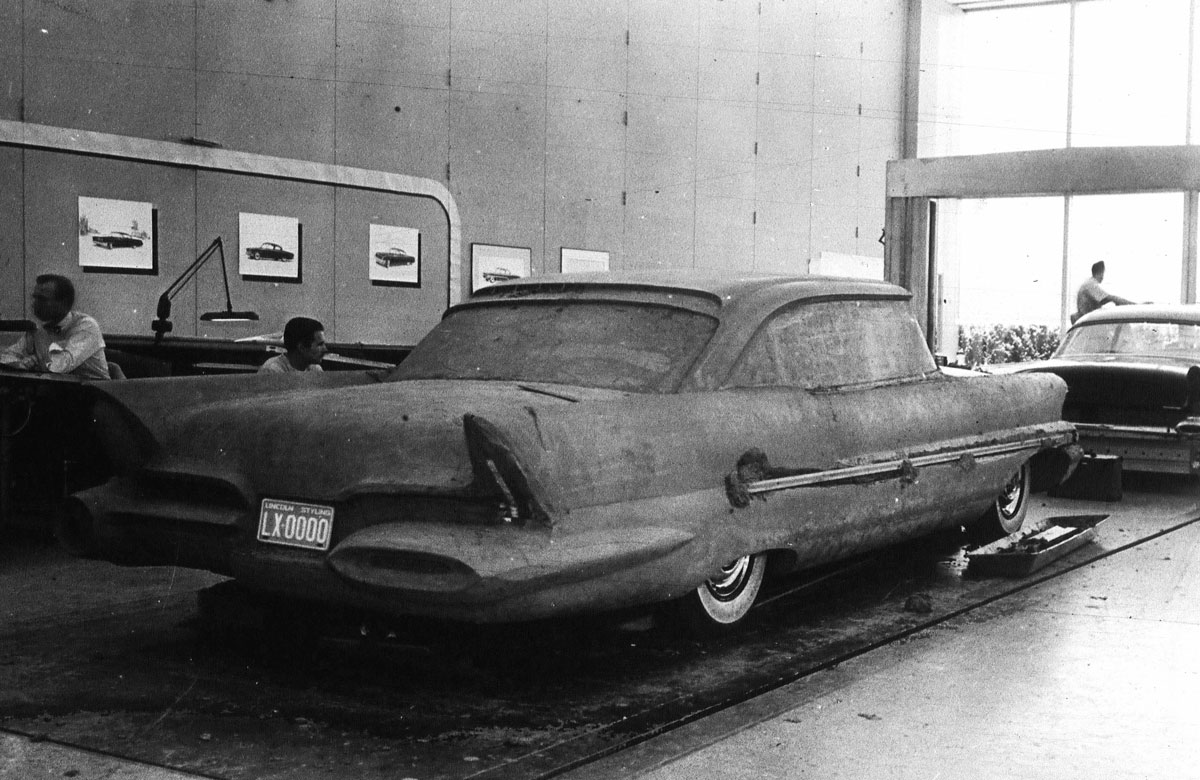
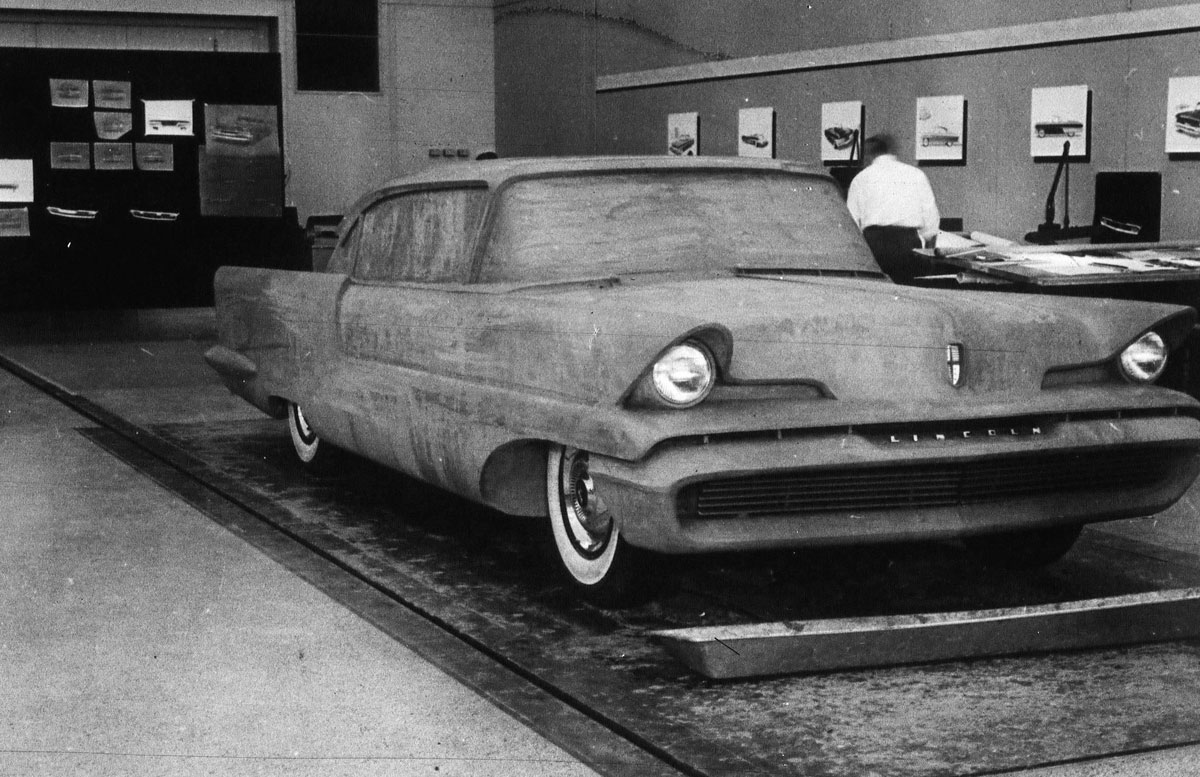
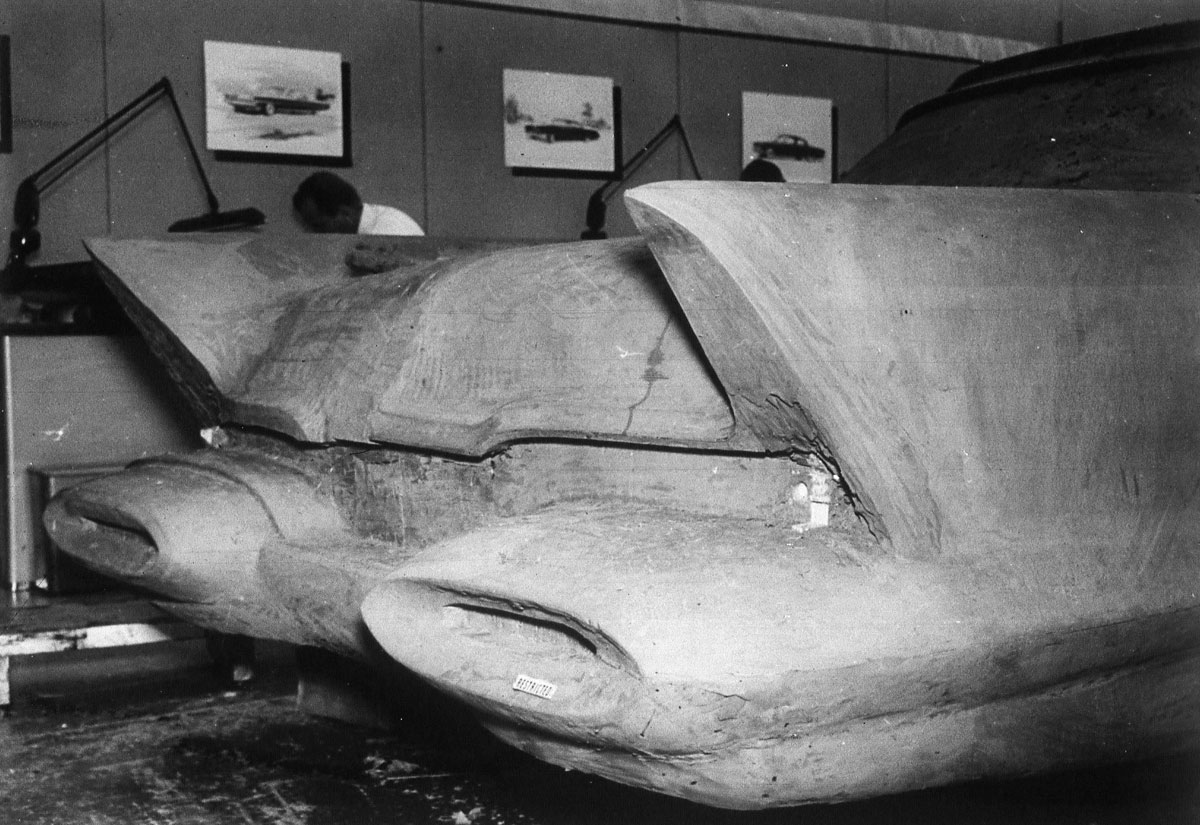
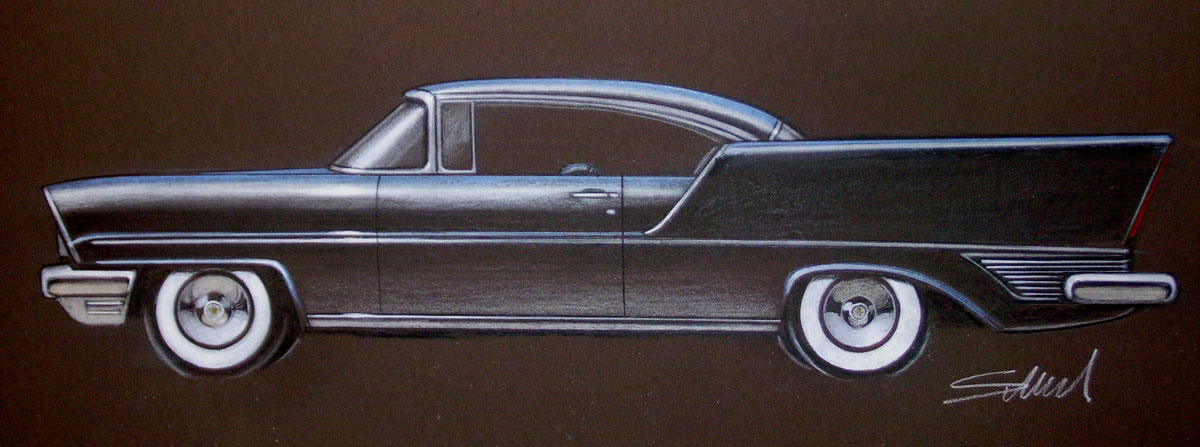
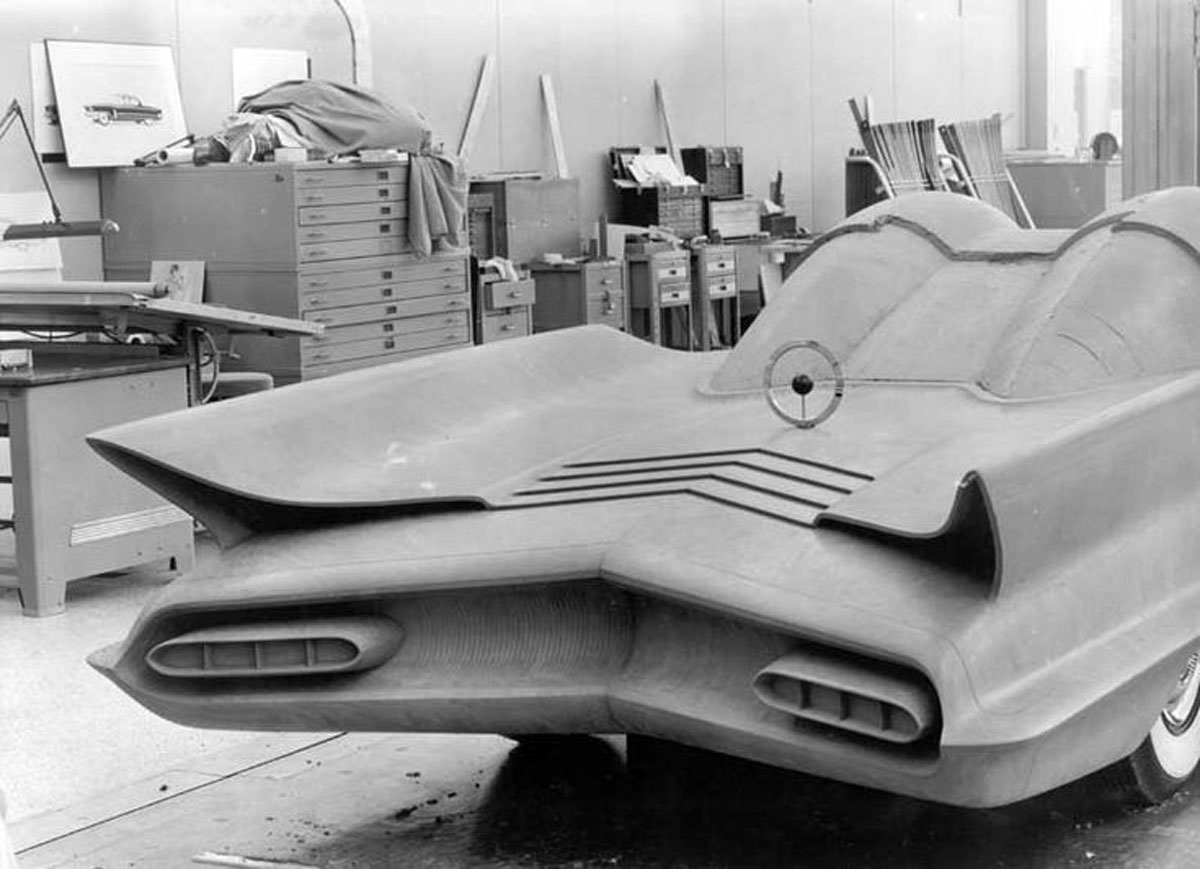
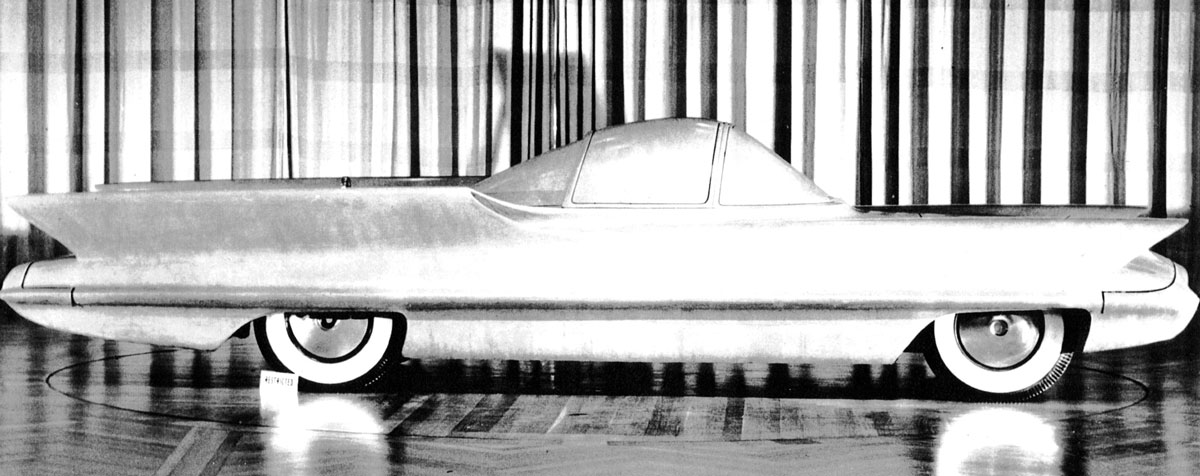
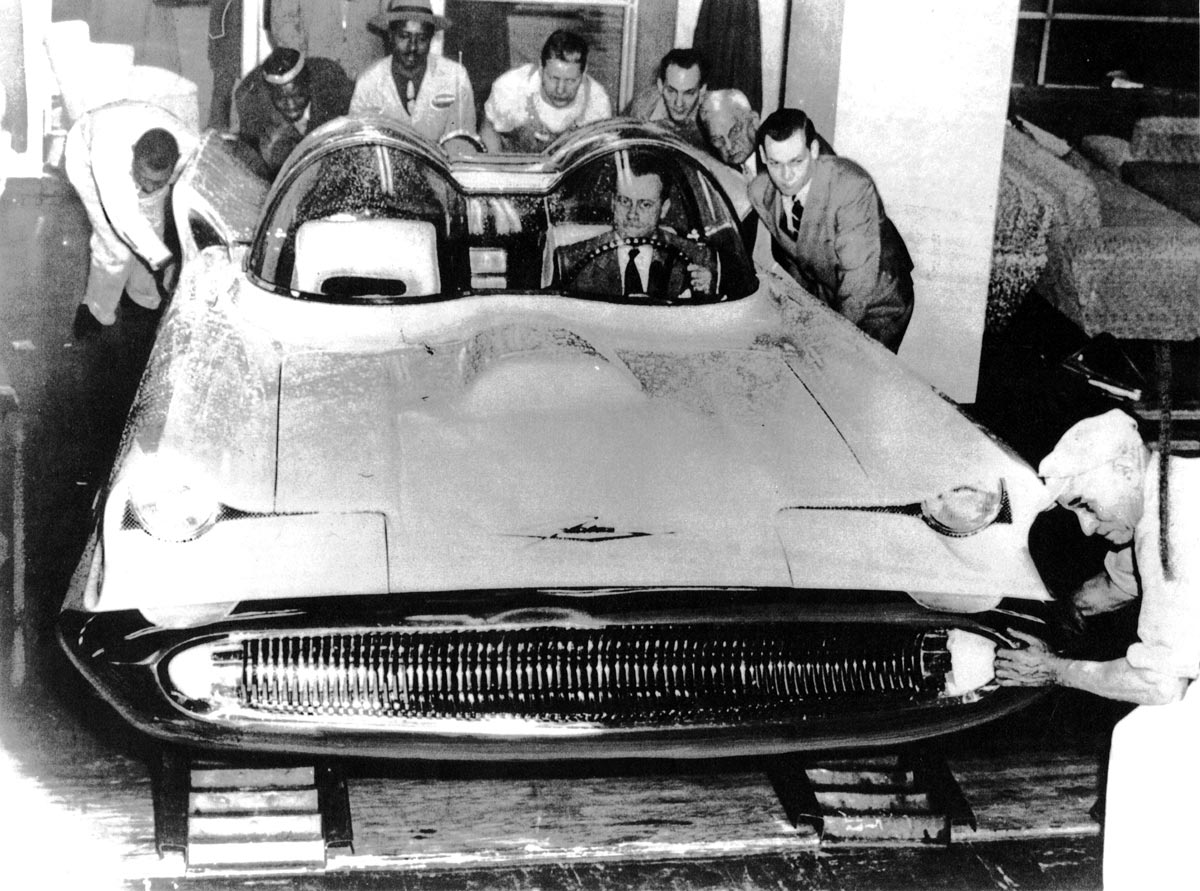
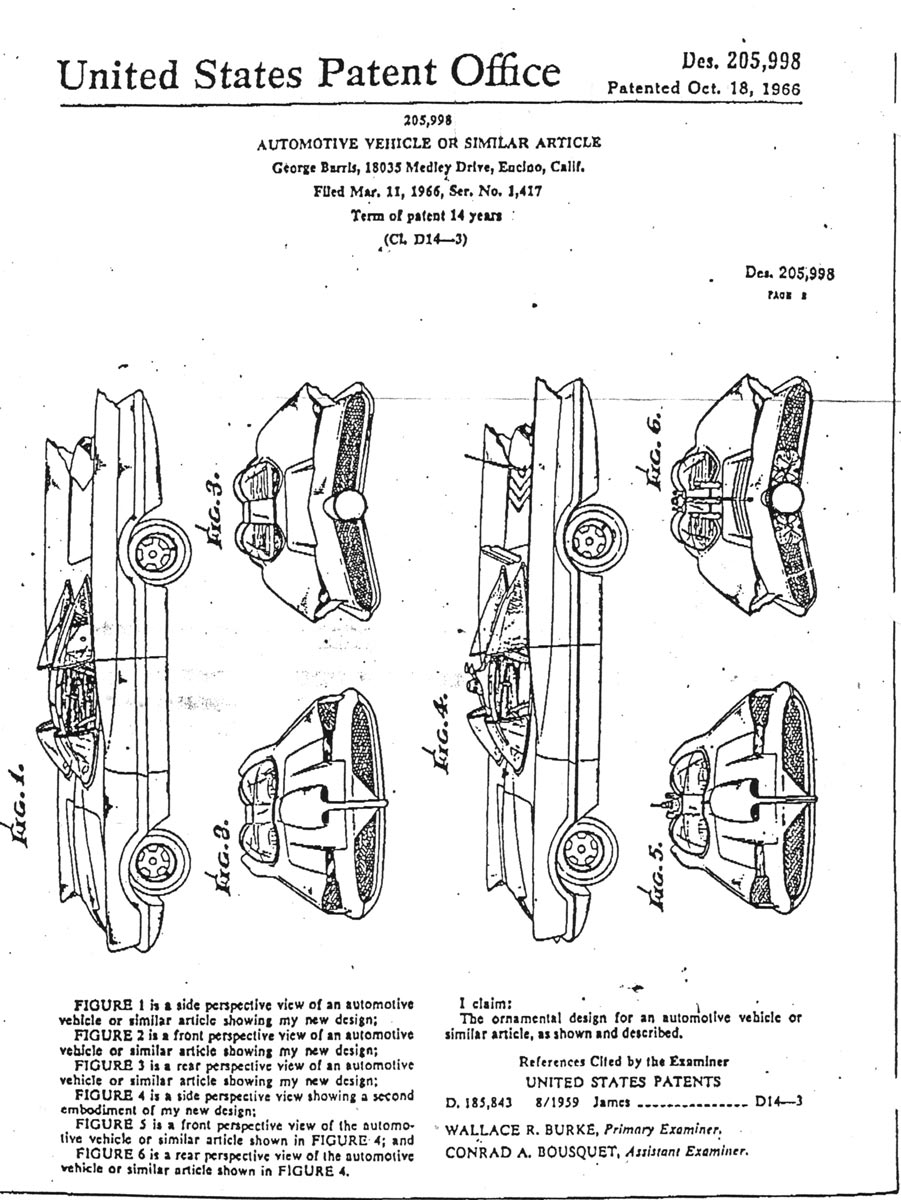
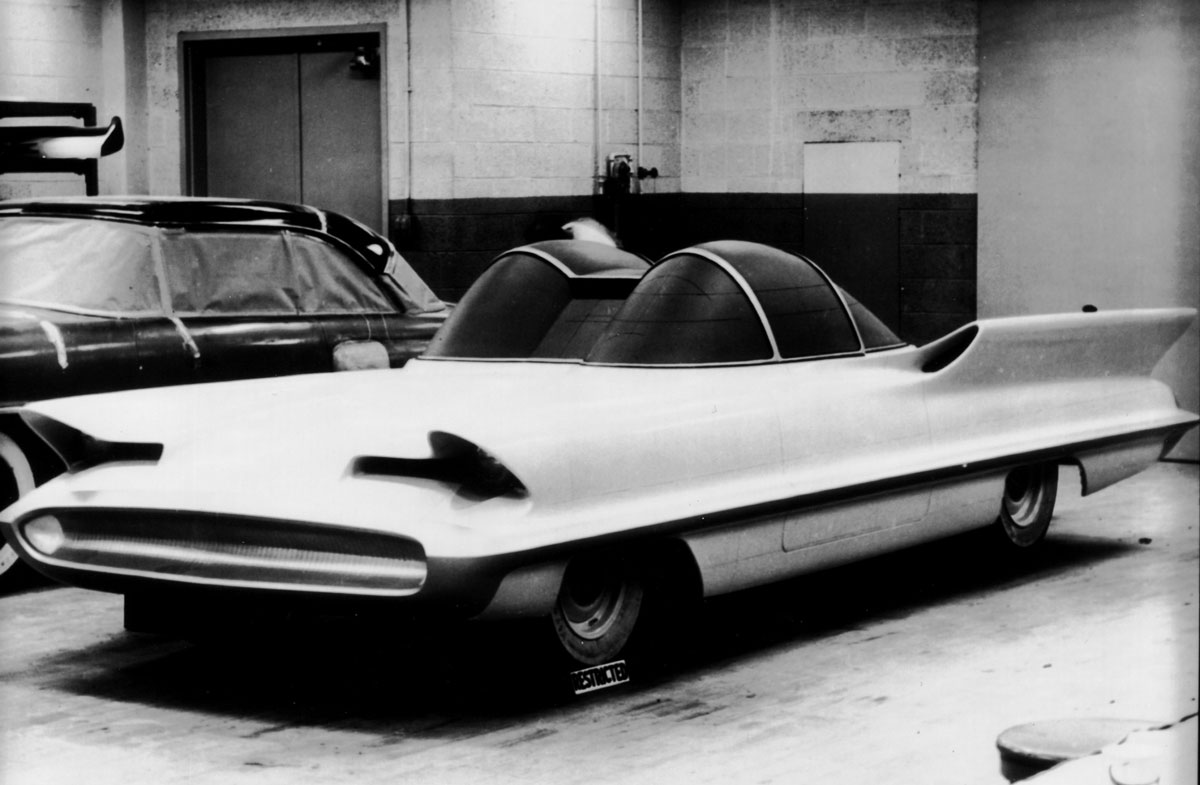
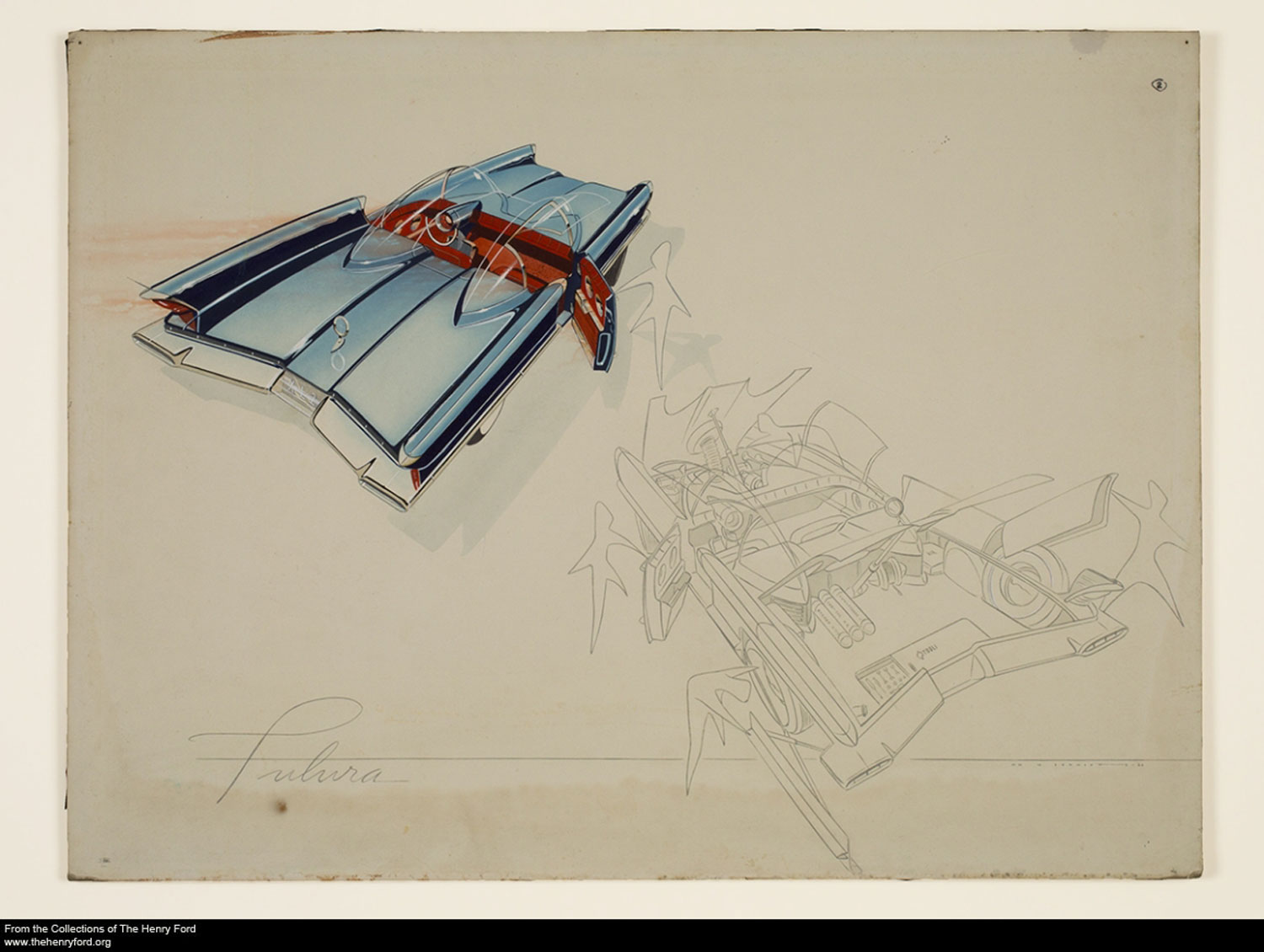
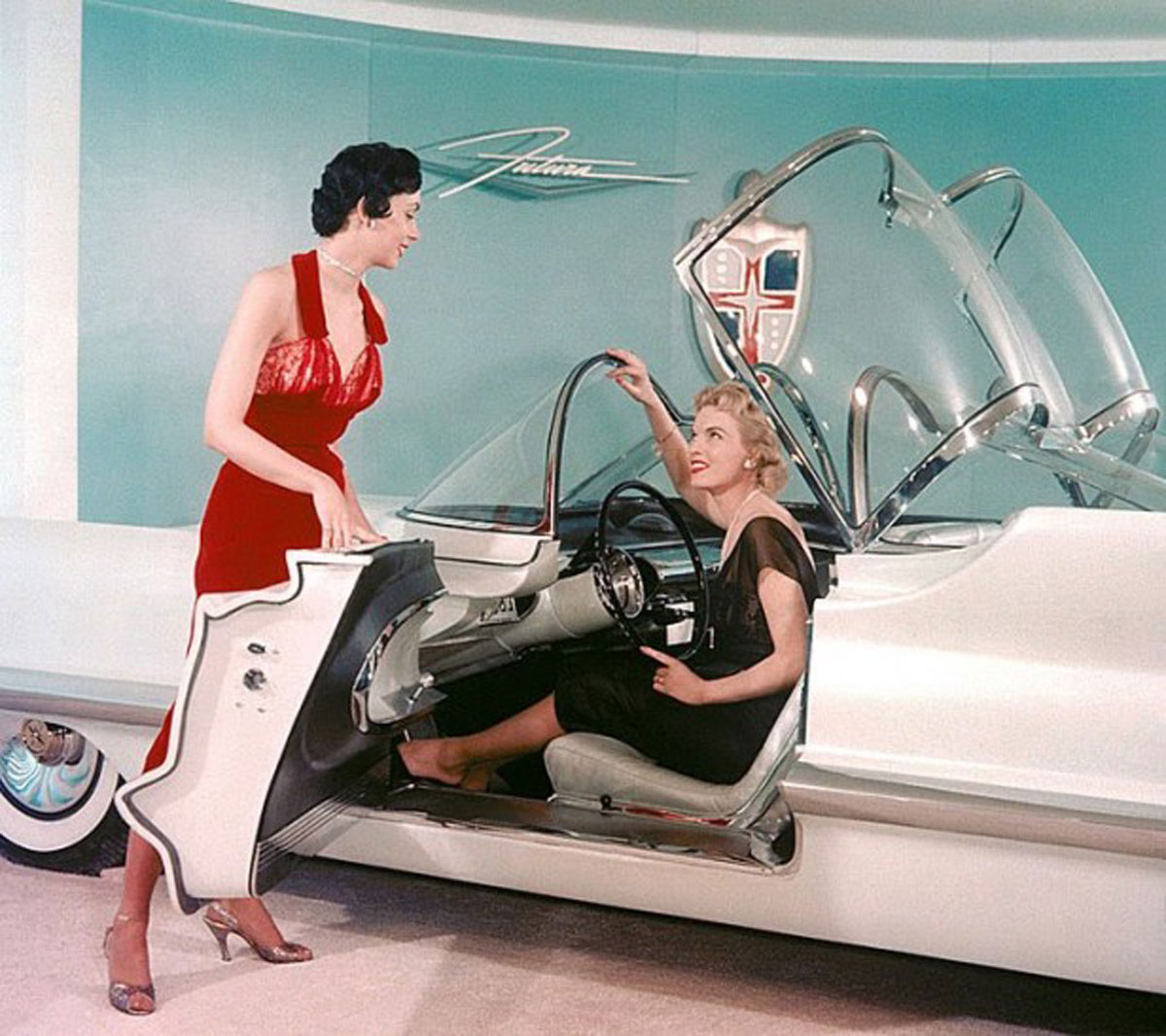
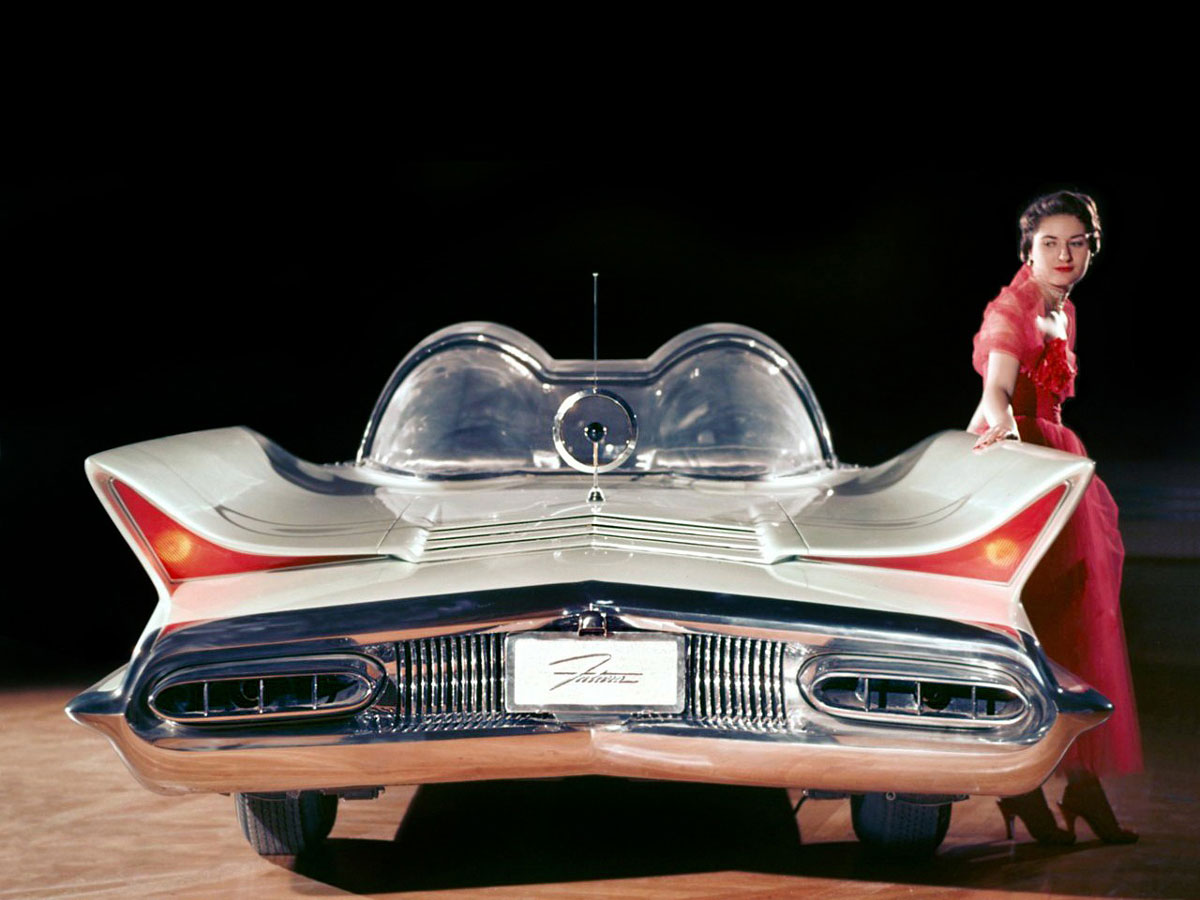
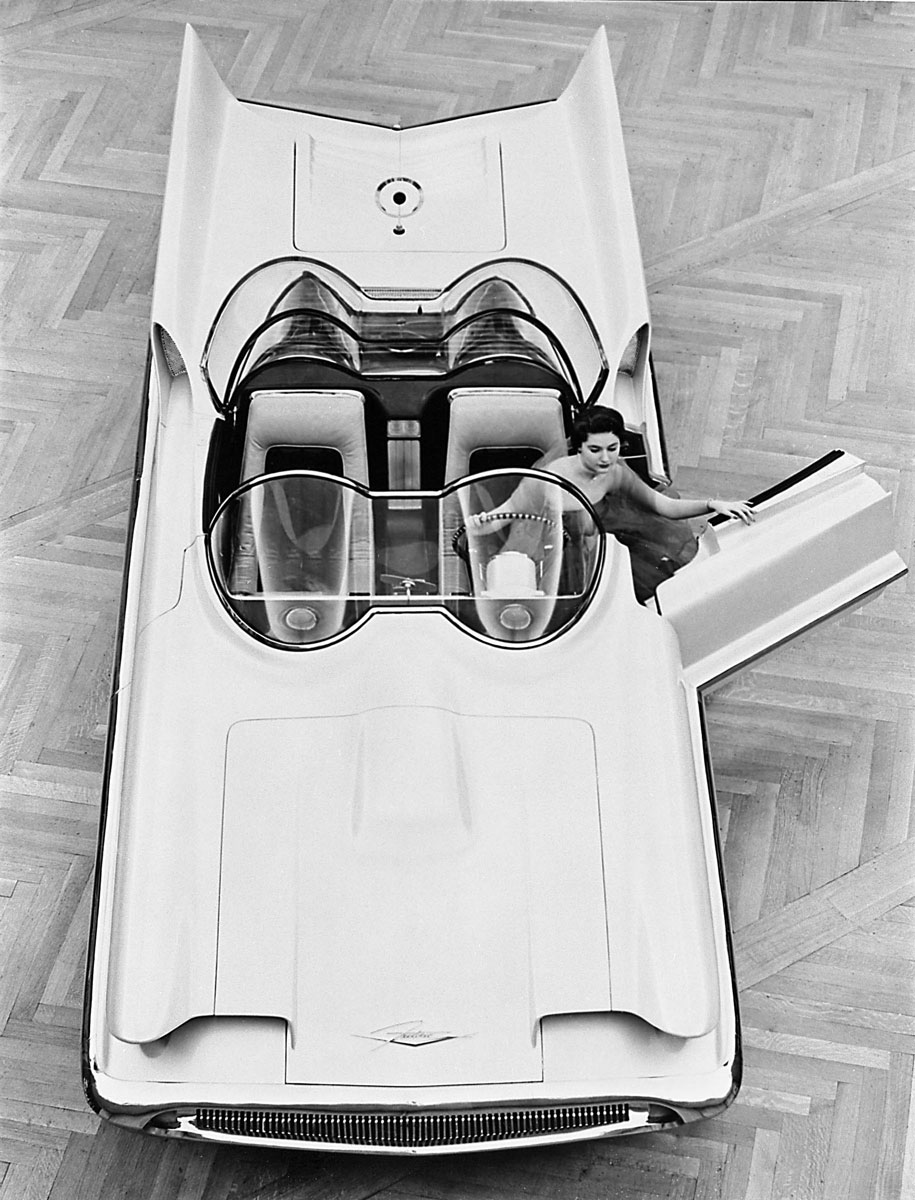
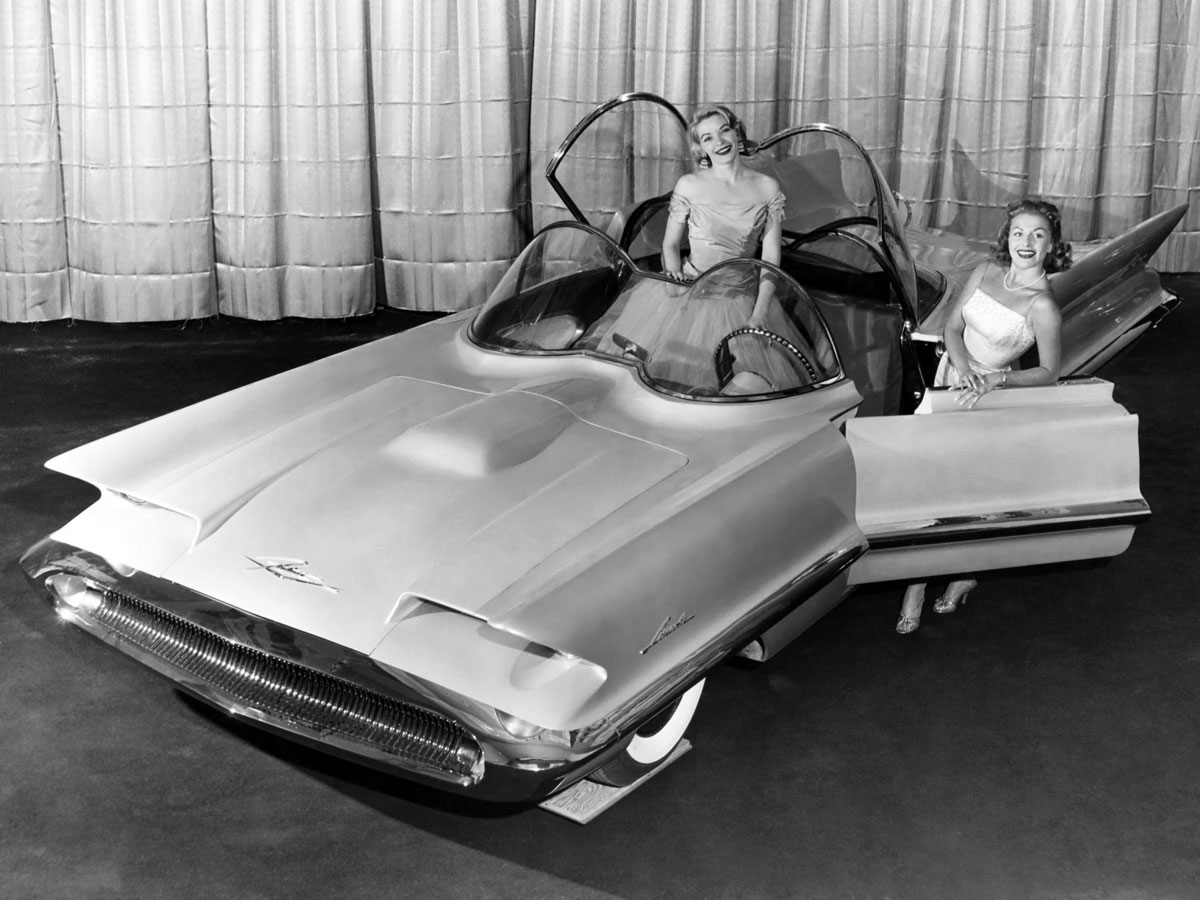
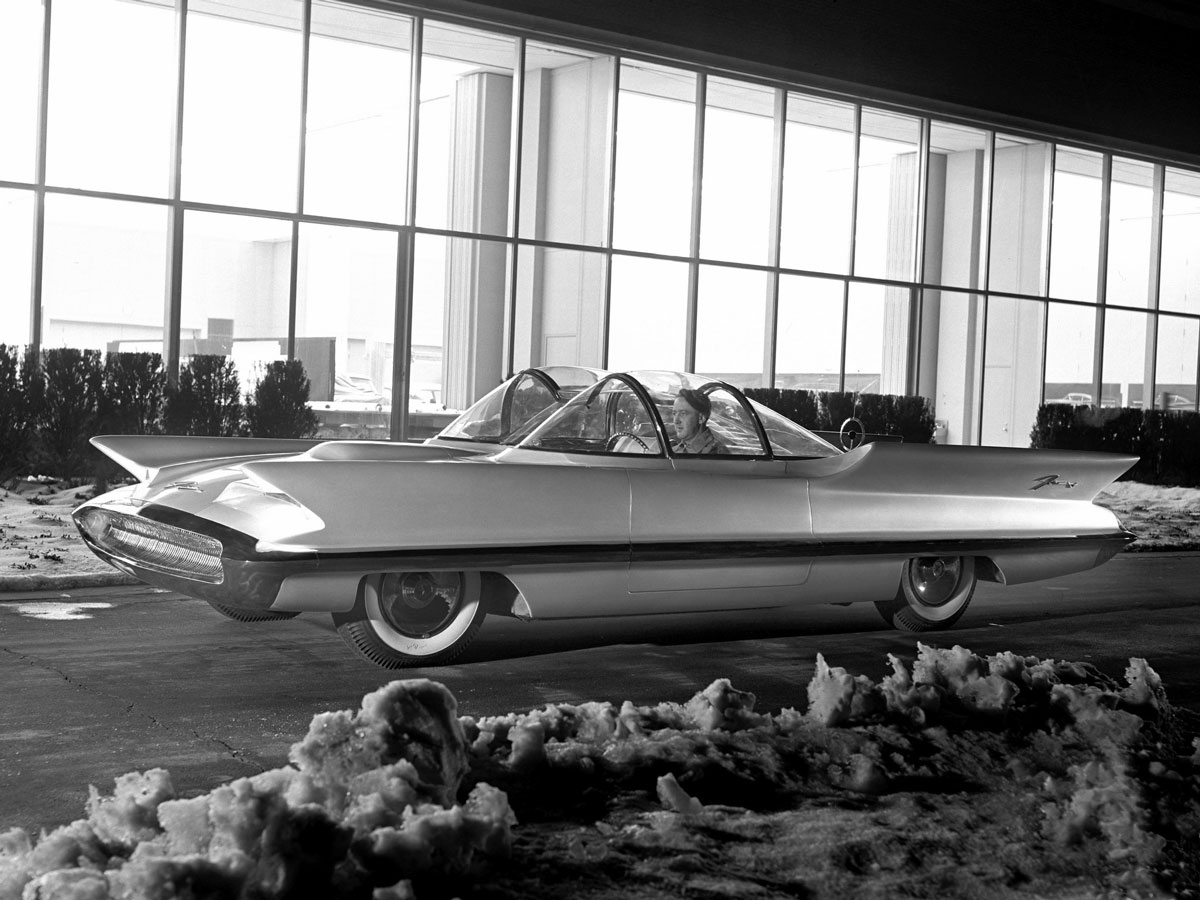
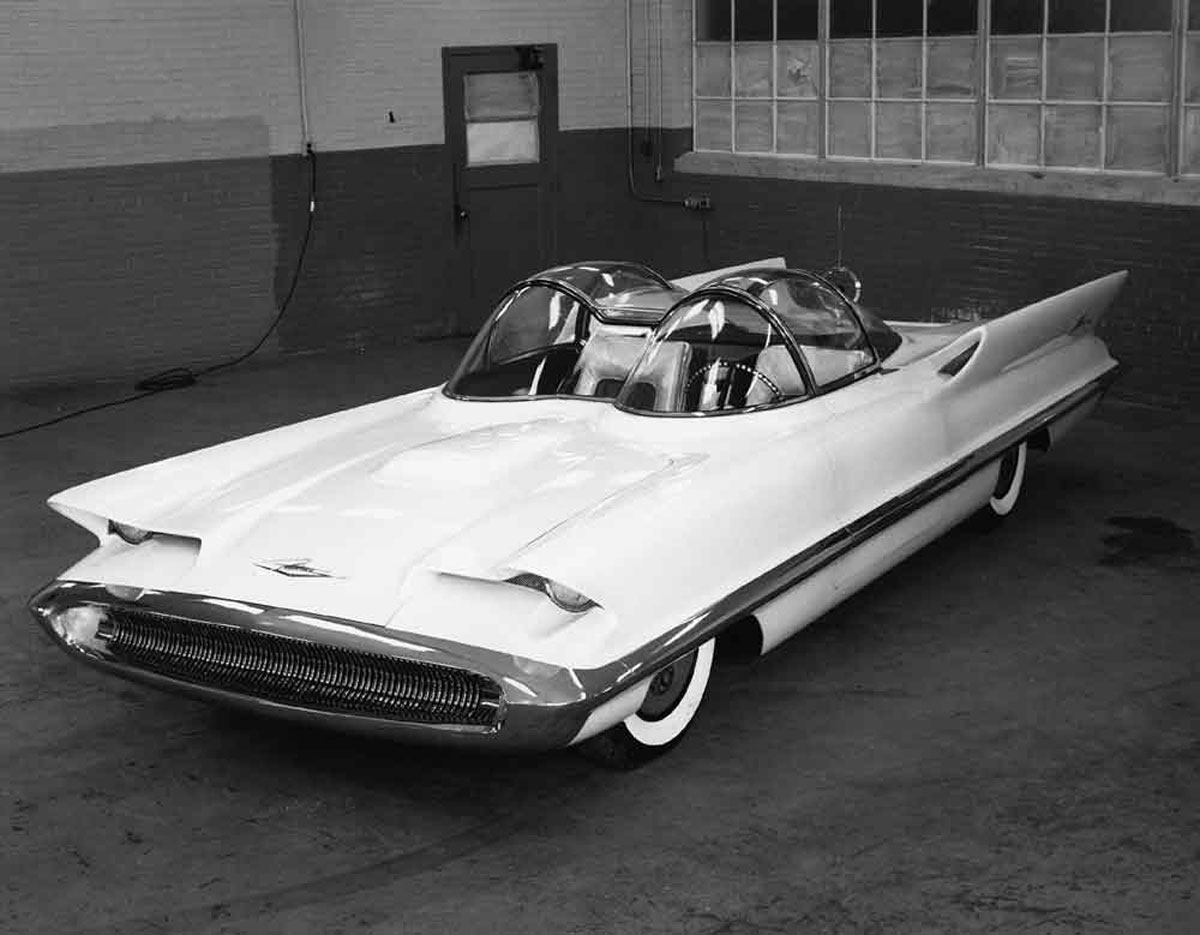
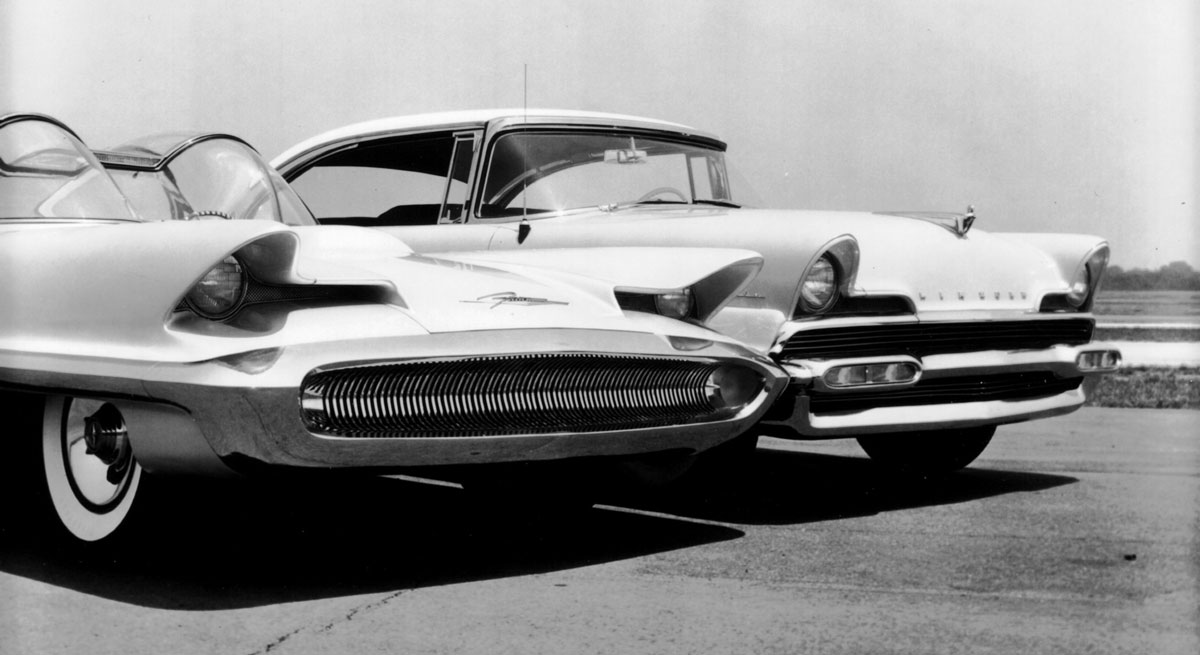
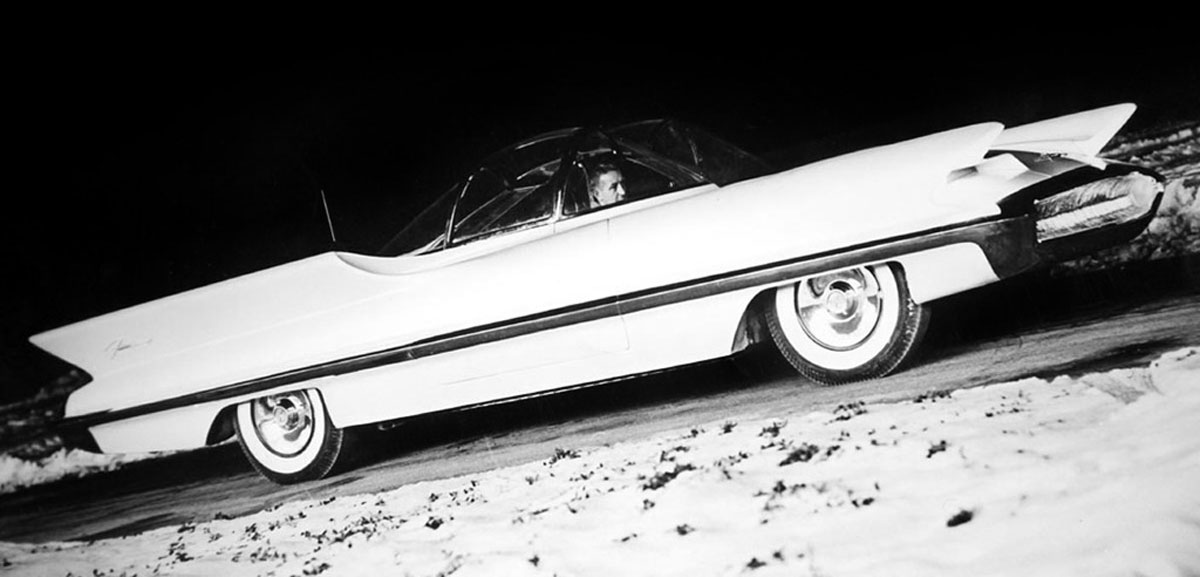
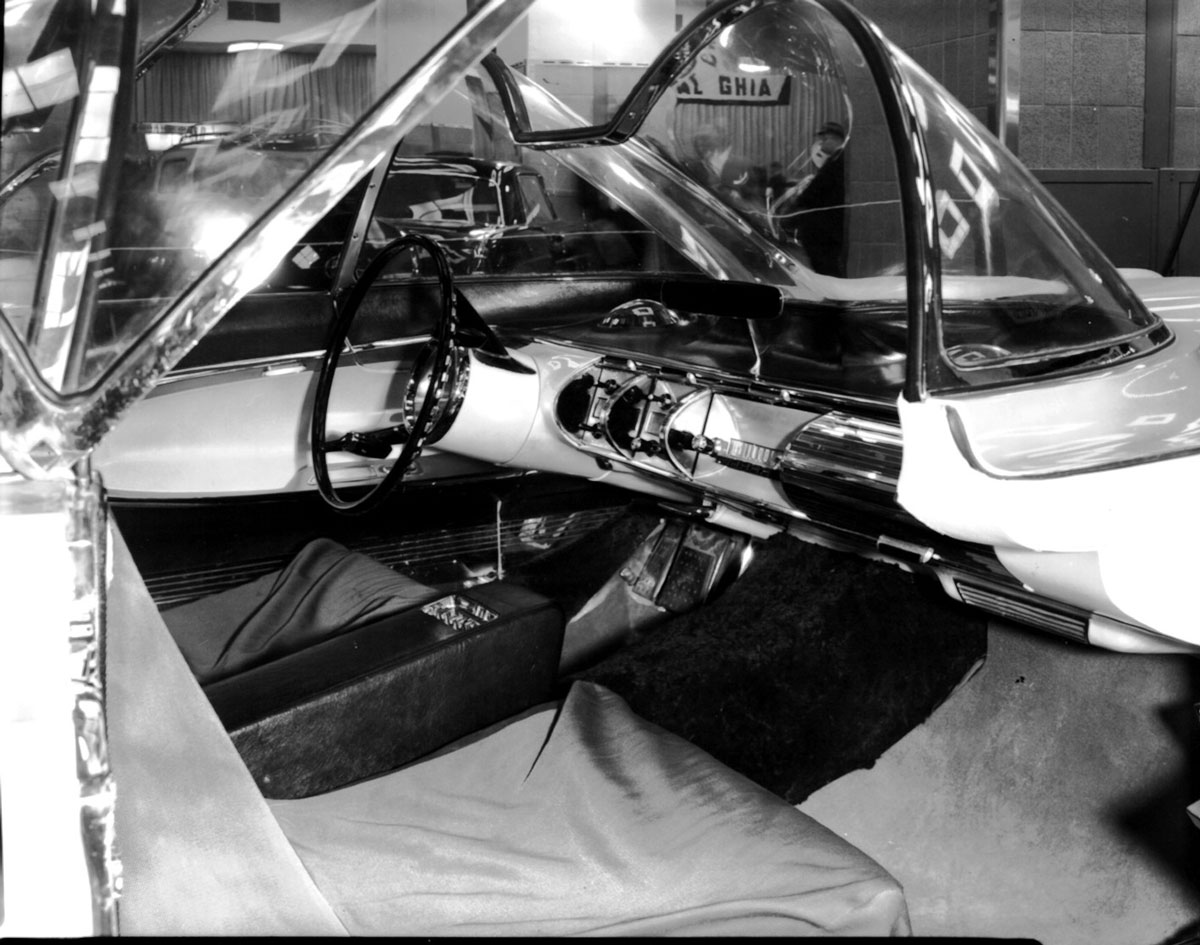
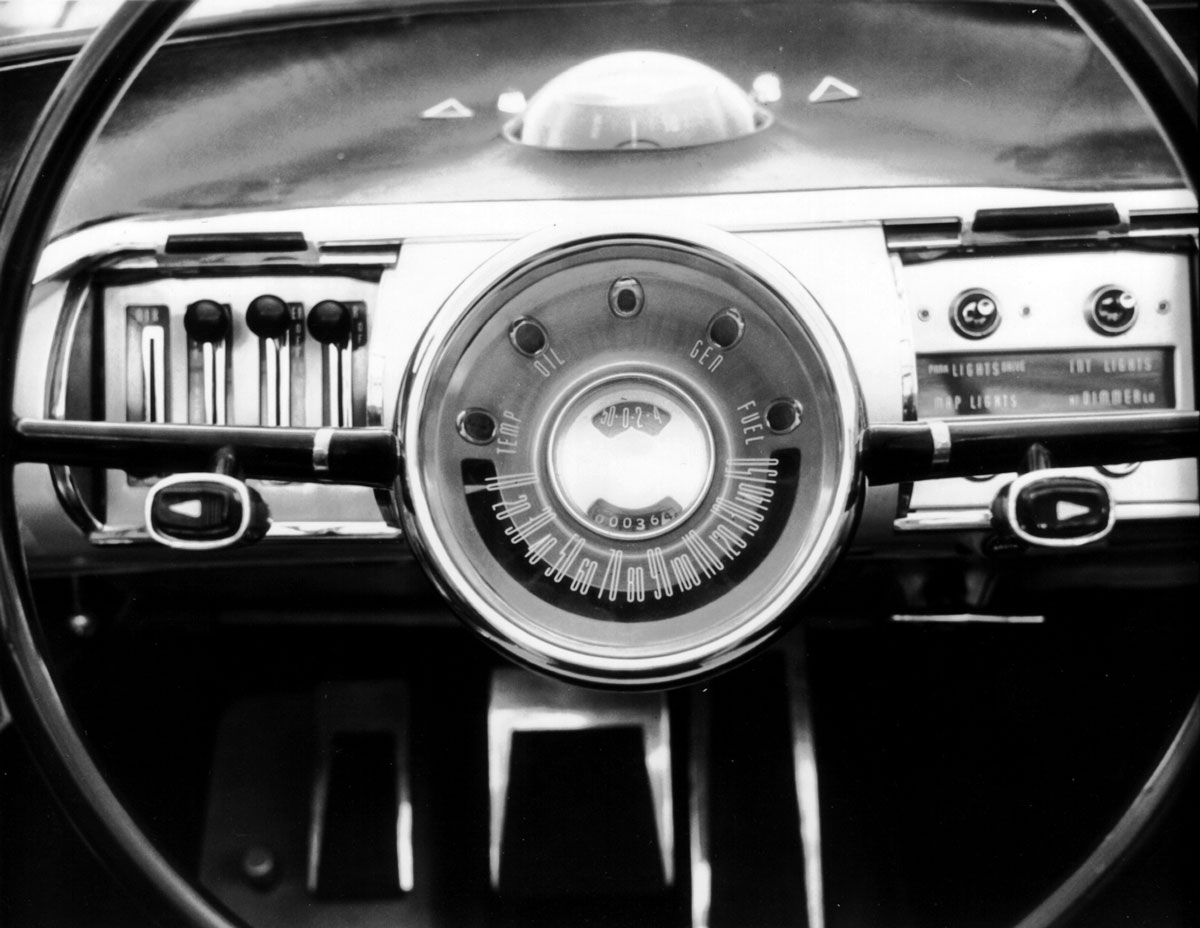
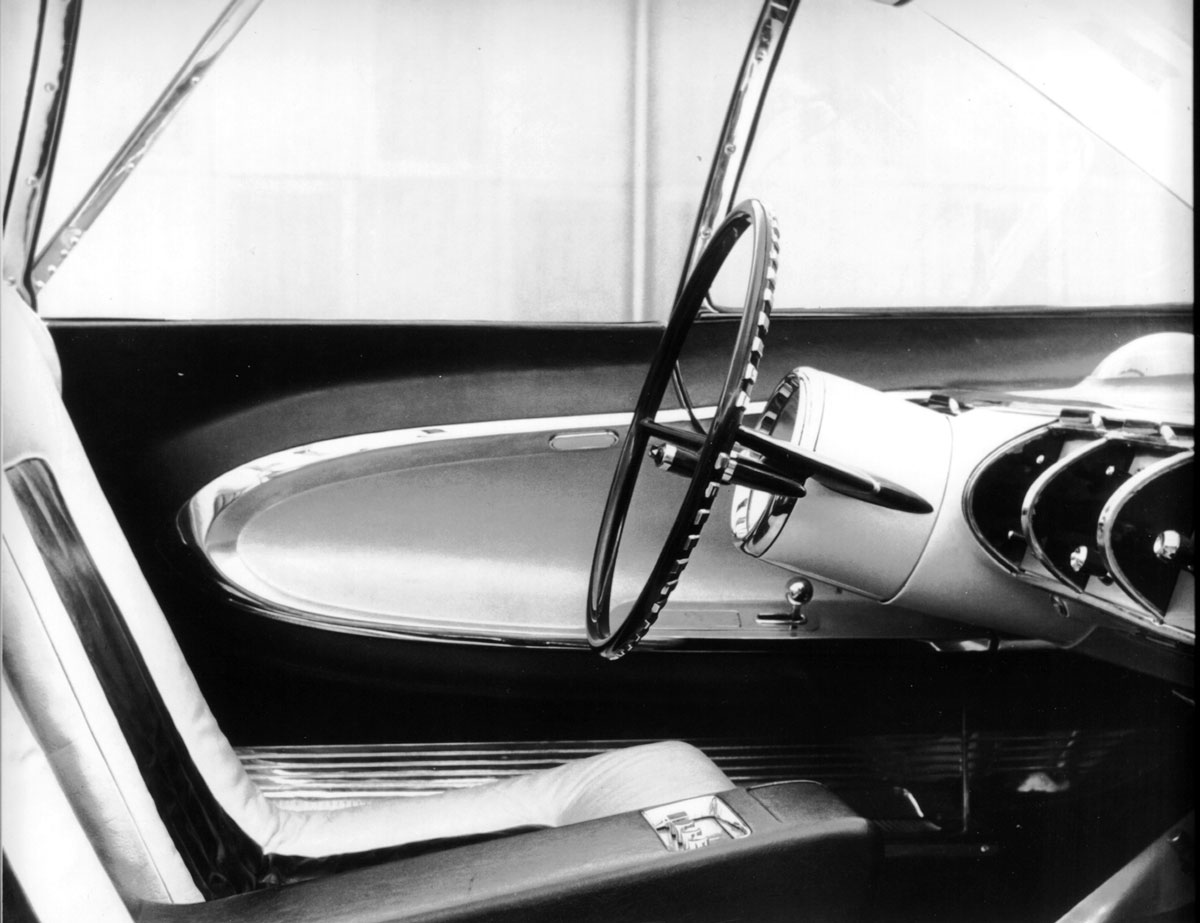
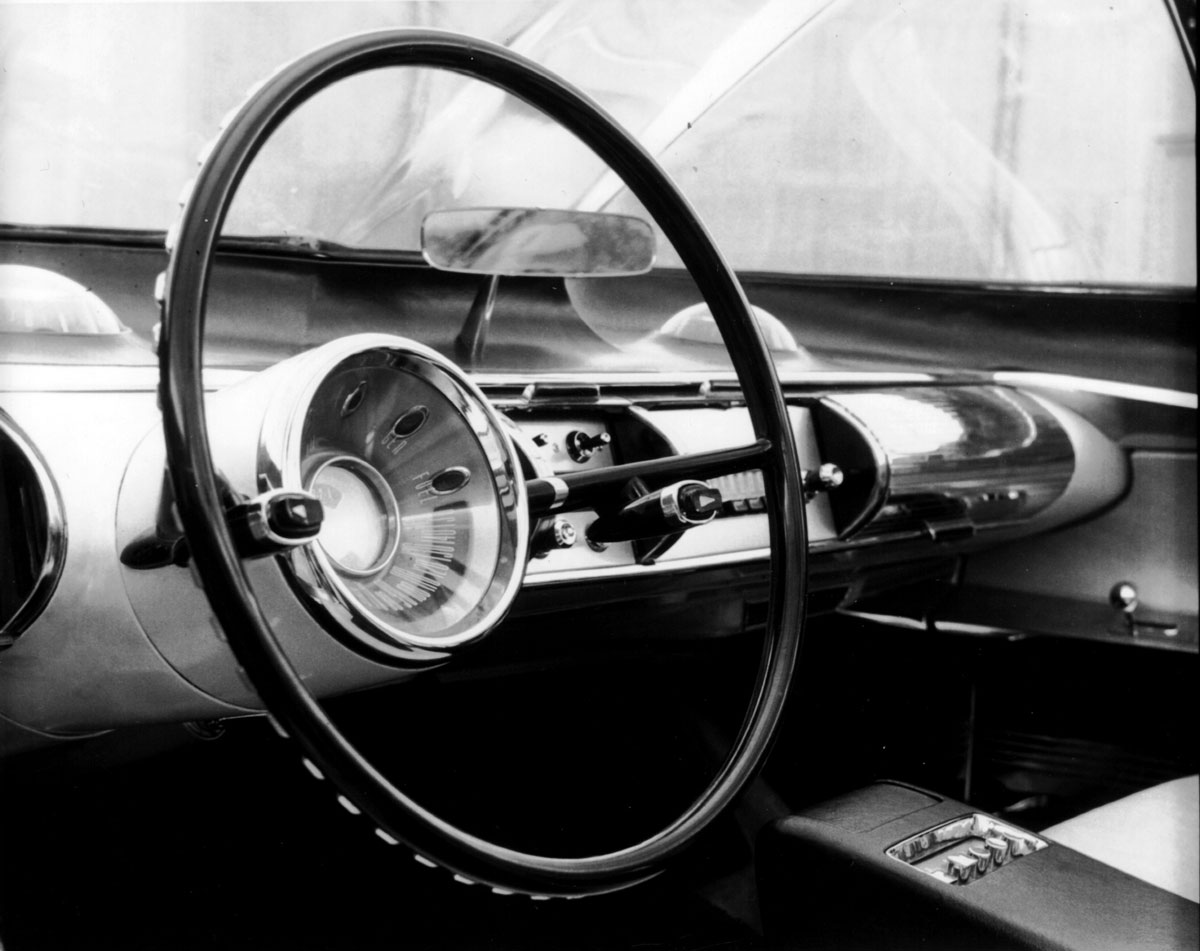
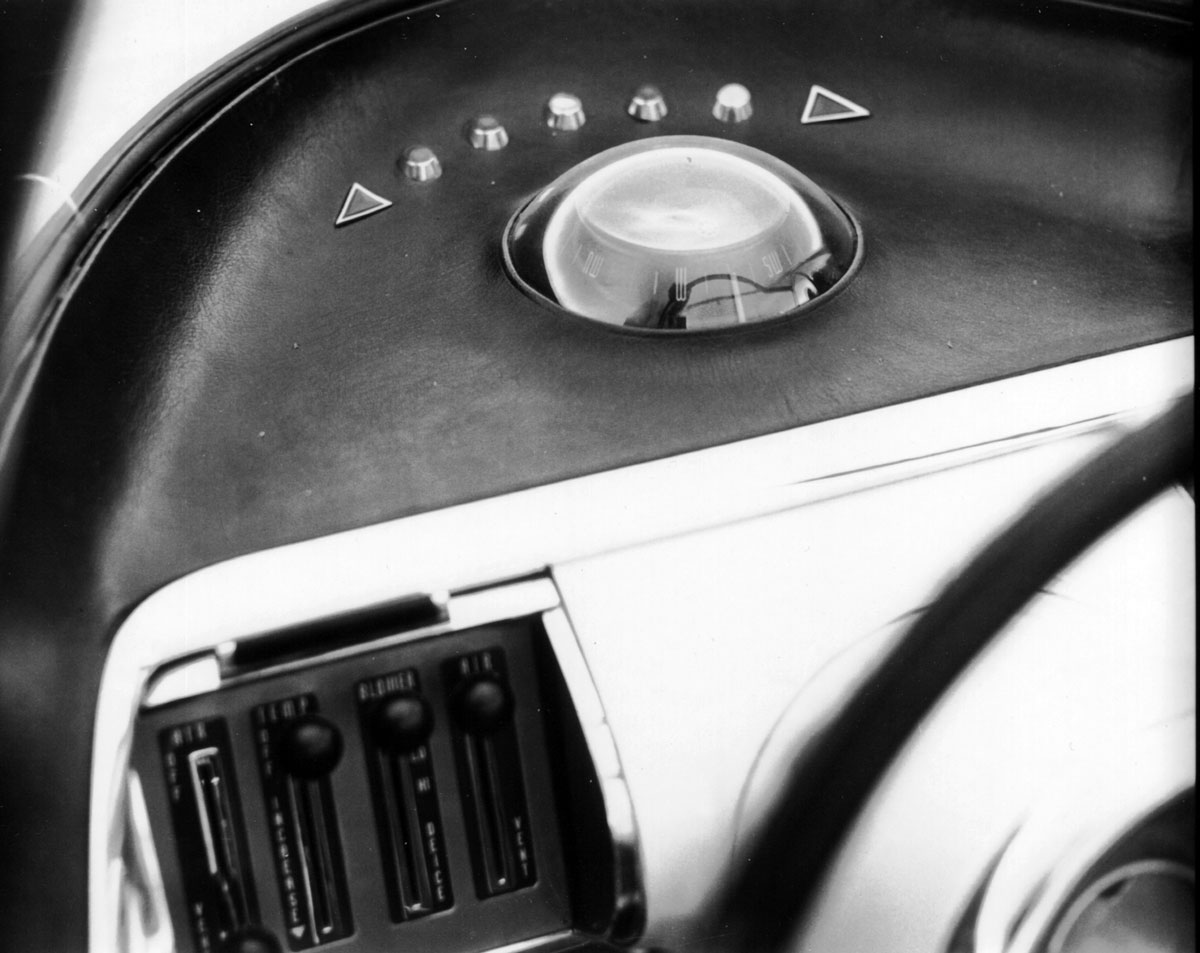
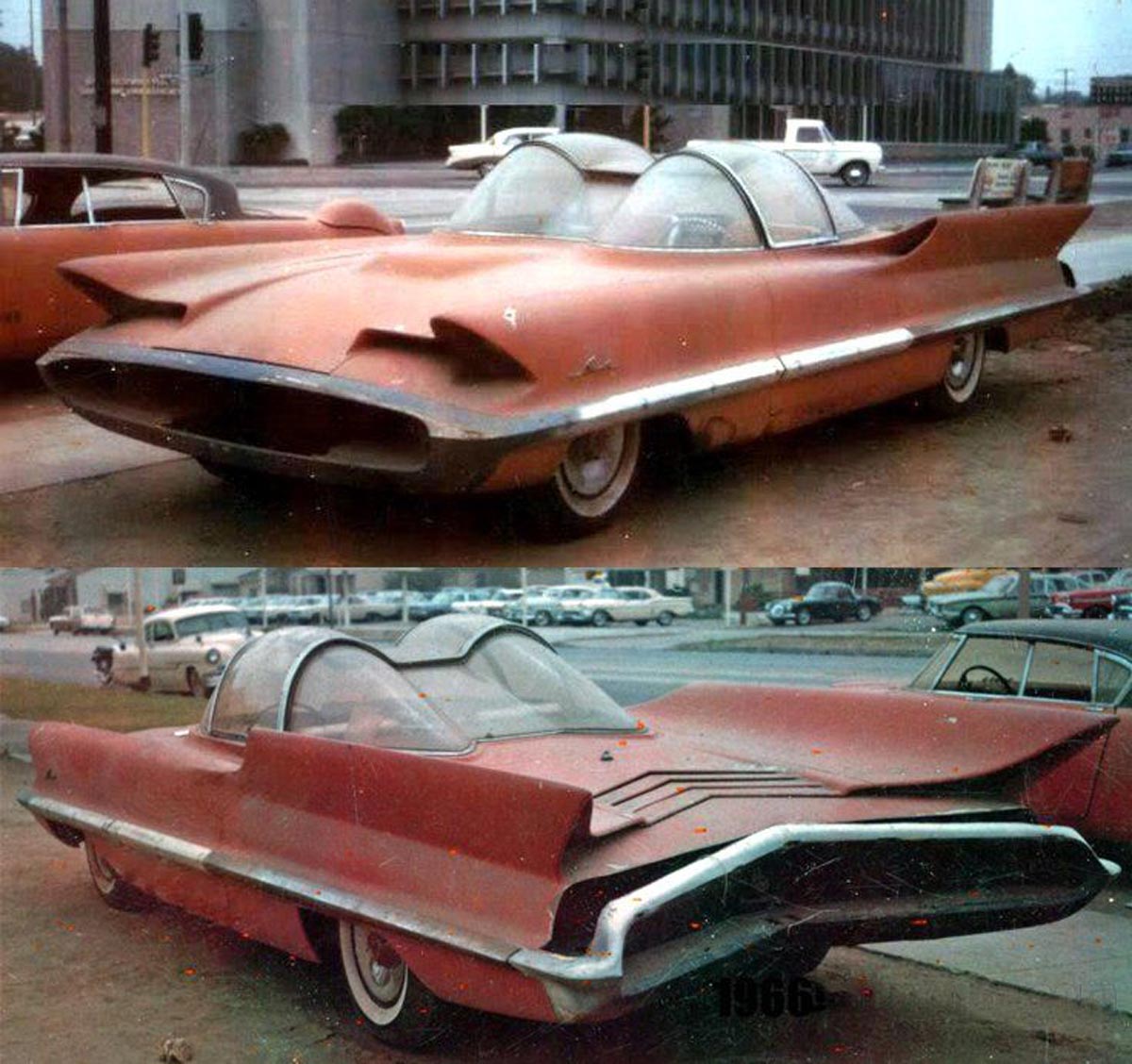
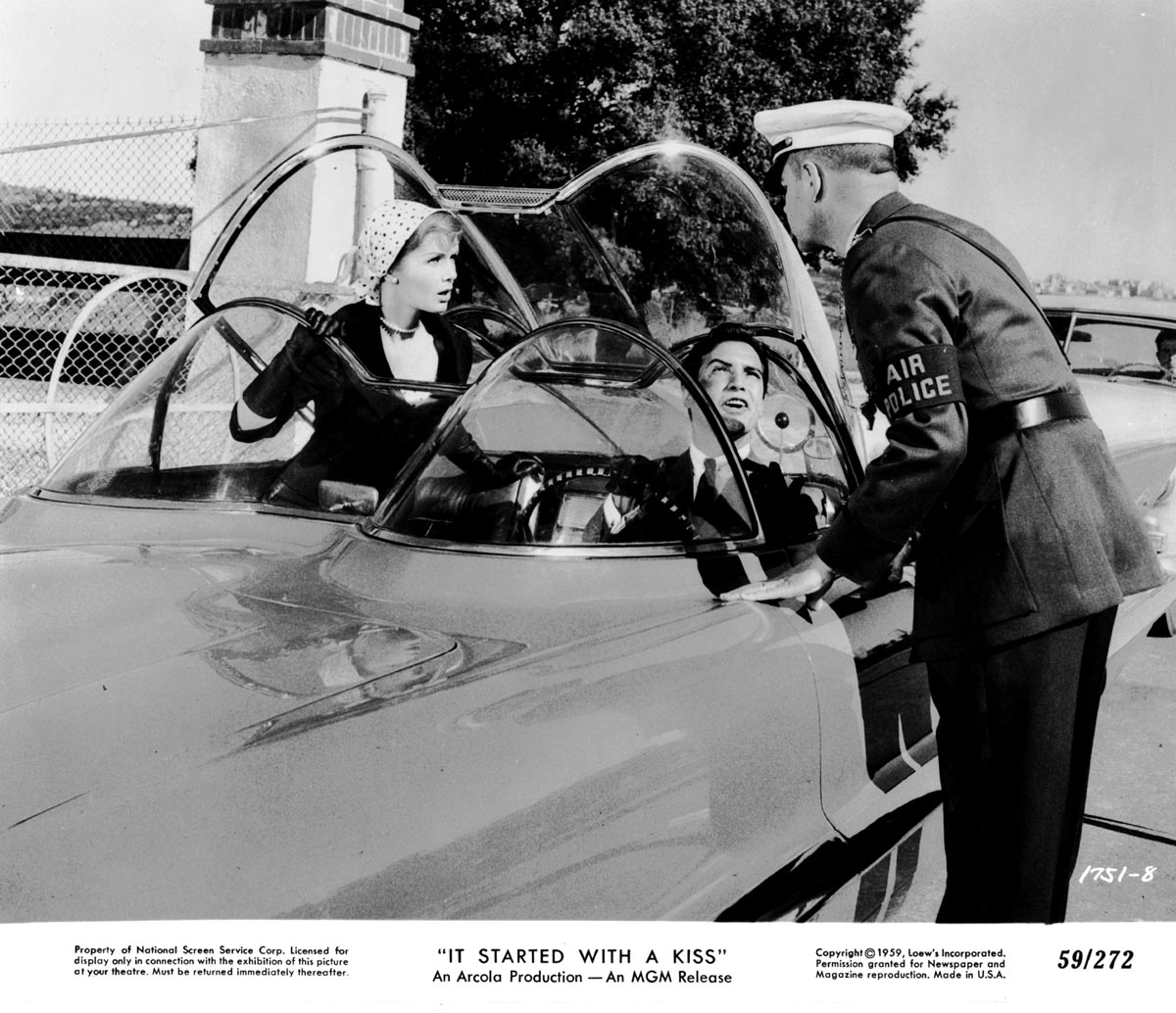
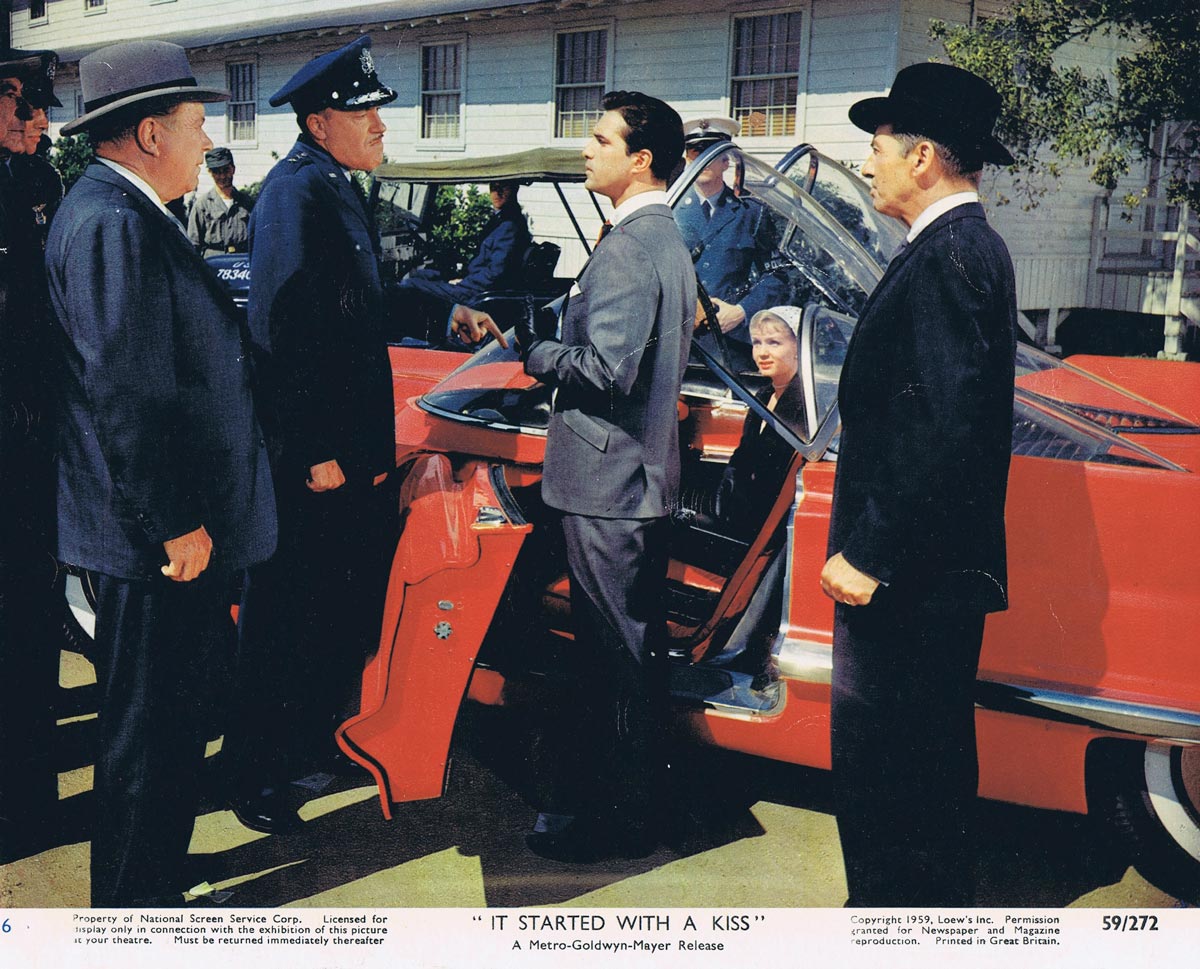
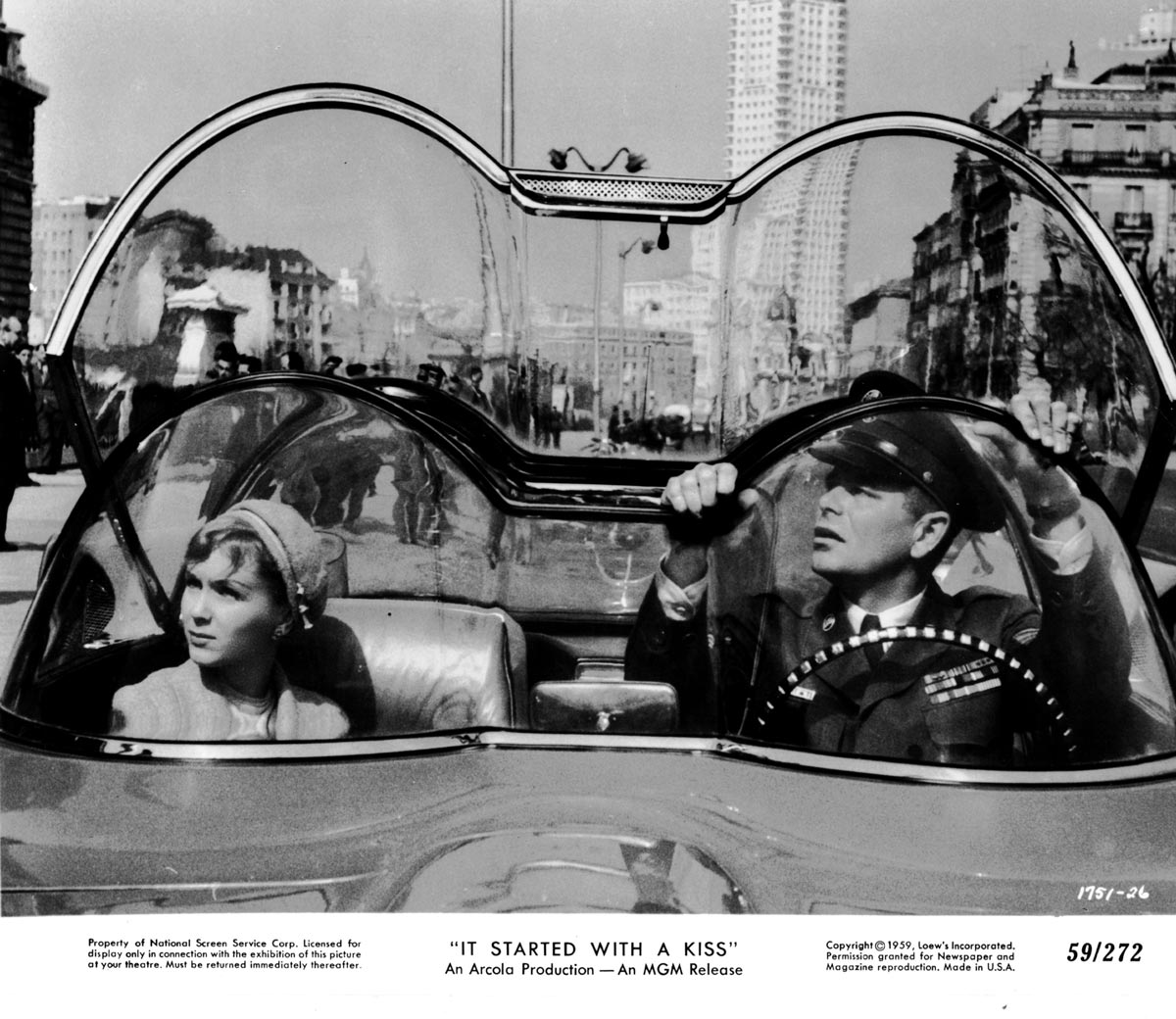
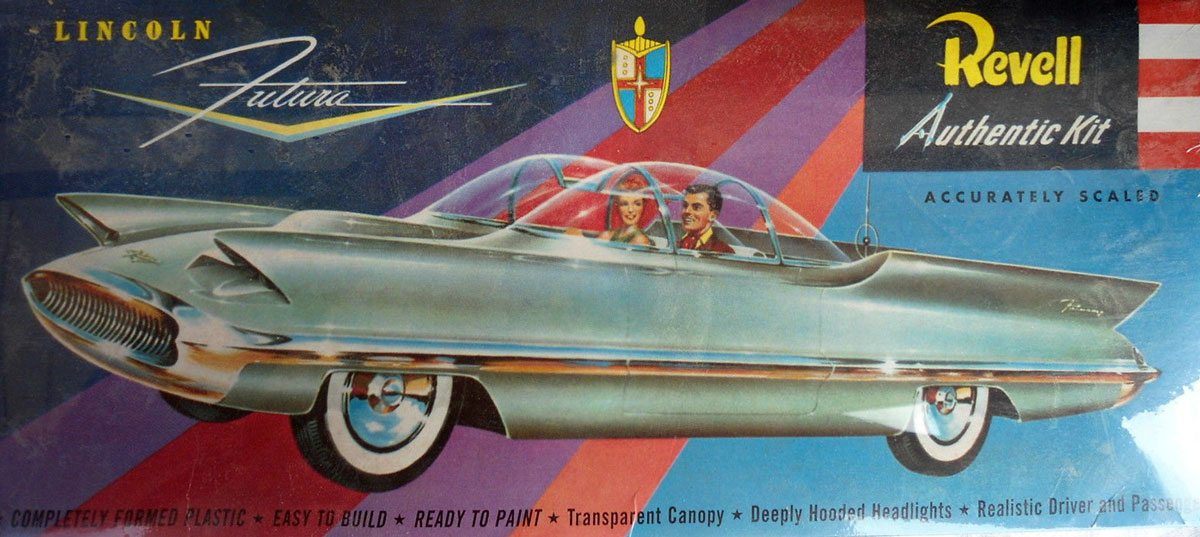
I wondered about what it was like to be in the Futura (or any other bubble-top car) when it didn’t have good a/c. It figures that the ultra violet problem AND the lack of rolling insulation (“drumming”) would exist. But I really wonder what a “production” Futura would have looked like. The ’57 Capri didn’t really make the bar – always looked like a wannabee design, so I am not surprised to read that’s just what it was. Anybody want to comment on riding in the XP-700? Or the Corvette SS (with the bubble top)?
Very interesting backstory.
Hello Gary and all of the readers of Deans Garage,
I’m trying to learn more about the Oldsmobile Golden Rocket, and possibly learn of its location today. I’m sure that one of you have great info on that great car and where it is today.
Thanks,
Ed Welburn
To Ed Welburn: Did you ever get the copy of DREAM CARS I sent to you at GM Styling? It was just before you retired.
Gary,
This is terrific. Thanks!
I discovered the Lincoln Futura in the early ’60s while a preteen. It captured my imagination so much in its original form that when I saw the first promo for Batman with the black car coming out of a cave, I yelled at the TV “someone &#$@ed up the Futura!” That didn’t go over well with Mom and my younger sibs. Something about soap and my mouth?
I soon vowed that I would someday correct the situation. Over the next quarter of a century the Futura fantasy had to compete with life until finally the stars were aligned and I pulled the trigger in 1990. After bribing a museum guard, I was able to spend the midnight hour(s) gathering dimensions and profiles from a Barris Batmobile in Tennessee.
I made a set of lofting forms and sculpted a new Futura body that would render molds. Now only 30 years later, lol, I have a licensed drivable period correct “Lincoln Futura.” (Other copies exist but none are mid fifties Lincolns underneath.) Being it’s still miles away from being “show” finished, It’s realistic to considered it a rolling “Winchester House.”
My passion for all dream cars has its roots in my obsession with the Futura. That inspired me to recreate the Pontiac Club deMer and a modern Corvette based Cadillac Cyclone with Earl’s original fins, dubbed PsyClone. The Futura was also my gateway into becoming friends with Joe Bortz and reconstructing two original Motorama cars, both from the famous Warhoops find.
The Lincoln Futura sure has been good to me. Working on it is always satisfying, but way more important is how it has been the common denominator for getting to know so many talented, enthusiastic individuals. That’s the priceless payback!
Thank You Bill Schmidt for your marvelous fantasy vision .
Marty Martino
Like many, I found out about the Futura by tracing back the history of the Batmobile. I find it fascinating. Before the Batmobile rolled out of the Bat Cave I was already interested in Custom Cars, but had not really discovered the world of Concept cars. I knew about Darryl Starbird and Gene Winfield and George Barris and Ed Roth. But not about any designers for the Big Three.. When I was 11 years old the model of Darryl Starbird’s “Precicta” came out and I built the model.. That’s when I became hooked on Customs and Bubble Tops.. Thanks to Marty Martino’s sculpts of the Futura, and some evolution of those sculpts, I now own a driveable Batmobile. And these days know a lot more about Concept Cars.. Looking forward to part II..
That should say Darryl Starbird’s “Predicta” …
Thanks for filling in many of the blanks re: the Futura’s design and development, and its subsequent relegation to a fate it did not deserve…
My own connection and fascination with this car came when my grandmother bought me one of the original Revell Futura models at Chicago’s Maxwell Street market sometime in the summer of 1957. I was eight years old, and of course I imprinted like a baby duck. The vehicle is THE prototype for concept cars for me, as the “Y” Job was, simply put, too much a “conservative old man car” for my tastes, and remains so, though I’m an old man now.
I remember my first look at the TV Batmobile–I was in college then–and I spotted it as the Futura immediately. How could they resurrect such a fabulous concept as an overdone vehicle for a tongue-in-cheek interpretation of a favorite serious comic book? Doubly insulting to my sensibilities.
In roughly 1985, I saw the TV Batmobile at Barris’ shop on Lankershim, and took the opportunity to inspect it closely. The one takeaway that still burns in my brain all these years later, is the IP. Barris had covered much of the original instrumentation with second-hand Fisher-Price preschool toys (phones and busy boxes), hot melt-glued in place and shot with fluorescent rattle cans. Apparently his wife Shirley was sent around to raid local Salvation Army stores to score these at $1-2 each…
Now, I’ve done movie prop and vehicle work in my career, and certainly understand the issues of TV budgets and deadlines, but to me this was the ultimate in hackery. The show had ended roughly fifteen years prior to this, and still the hack work remained. No one had taken the initiative to at least clean up this offense for the record and reputation.
After doing a bit of reading spurred by this piece, I found myself on Netflix, watching the episode of “Gotham Garage” that featured a completion of one of the replicas that descended from the original body in Barris’ possession.
ITEM: The car that GG “restored” was a messed-up, unfinished project that started life as a pull from molds made with Barris’ permission from the Batmobile before he passed away. So, it was a replica to begin with; awful shape with raw fiberglass, spidered gelcoat, bondo slathered on indiscriminately here and there, three colors of primer, etc.
Apparently they only had 13 days to bring it back to life.
I don’t believe for a minute that it was wrappecd in 13 days with all the TV crew present and scripted inserts, and so on. I’d believe maybe 60 days with a crew of six…
The GG shop is a slovenly disaster. I guess this appeals to the lowest common denominator TV hot rod nerd. But it just made me itch. When I saw the input keyboard for their waterjet cutter, caked with a quarter inch of grime and greasy fingerprints, I just about shut my TV off right then.
The staff or this dump look like they belong…knit toques, teeth missing and brown ones remaining, stubble, grime. Yeccchhh. But they build full-sized Hot Wheels replicas for Mattel. Is this really them? Is this really the shop they come out of? There’s a disconnect here. I can’t reconcile the product with the builders.
Every prototype vehicle shop I’ve worked in is 90% cleaner and better-organized that this dump.
After a half-hour of manufactured crises and junkyard responses, they cut to the Futura being driven on the road on its way to a Pomona meet, where it will go up for auction. Looks reasonably nice at first; seems to drive well. Notice the lack of bottom weatherstripping on the bubble top? I ‘ll be willing to bet it rattled like a bitch and the wind noise was really intrusive, but the car was “done”, so that’s all that mattered, right?
Then the camera pans in for a closeup shot of the instrument panel and steering wheel. Planted in the 1955-is speedometer nacelle is a—wait for it—Classic Instruments speedo in gold, with Roman numerals and baroque brass barometer needle.
At this point I turn off the episode and shake my head…
I understand the car sold for something like $90K, which would be ridiculously low for a really-nicely-done replica. But this is a hack job; perhaps 70% of it can be saved, but the rest is trash and the car really must be redone properly in order to do justice to this landmark concept car re-creation. We’ll leave it at that. Rhetorical observation: I don’t know how these guys can make a profit cranking out junque like this and selling it for such low bucks.
I hope to see this car finished properly; maybe it already has been? And KUDOS to Marty Martino for doing it PROPERLY!
The piscean origin of both the Futura and the Sting Ray is curious. It appears both designs were inspired by rays, and while Mitchell was focused on the mouth and “wings,” Schmidt was looking at the eyes and deciding that if it was a fish, it needed a tail, or at least dorsal fins. To GM’s credit, the productionized versions stayed true to their inspiration through the 1960s and ’70s. The Lincolns went off in another direction.